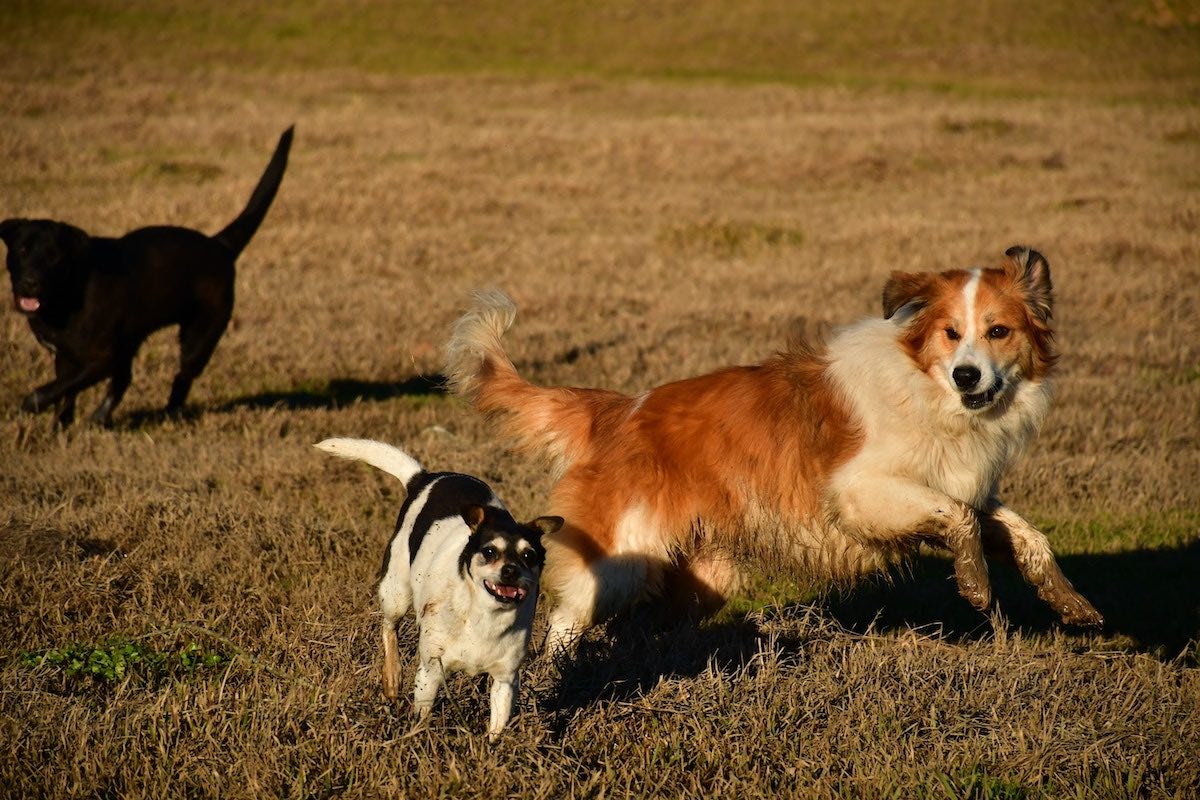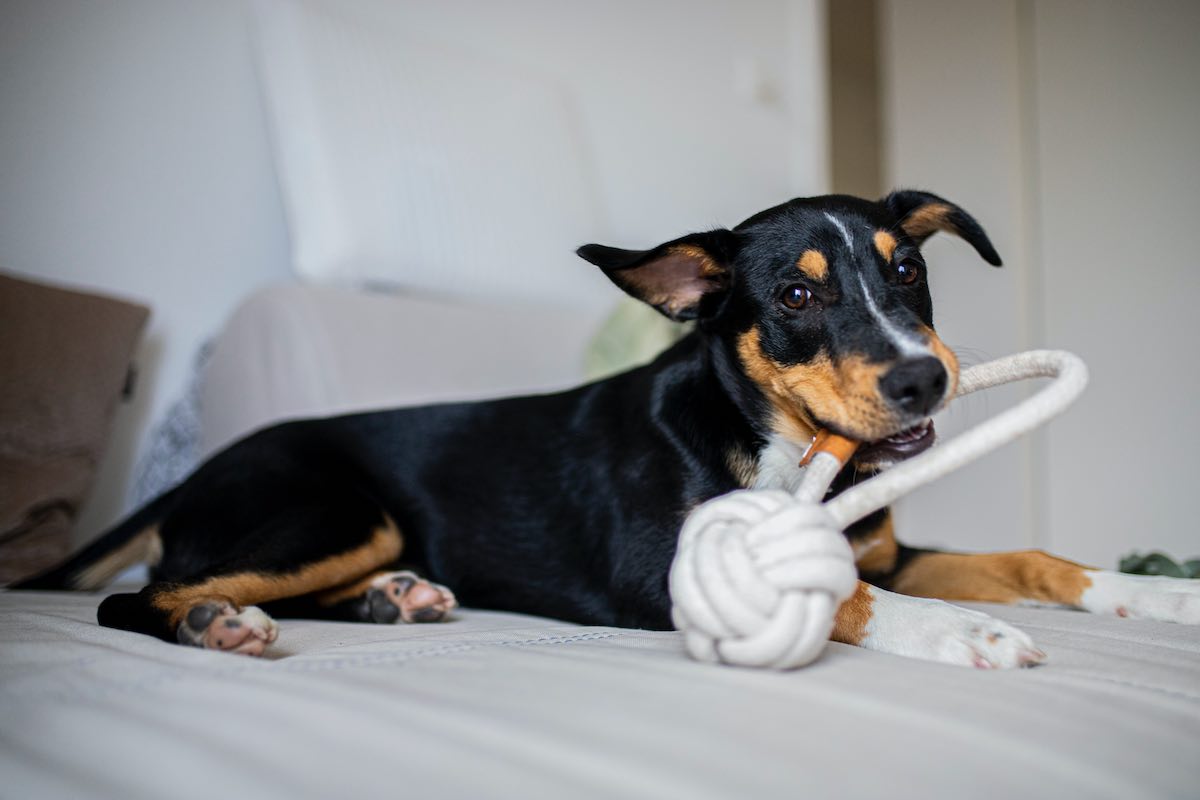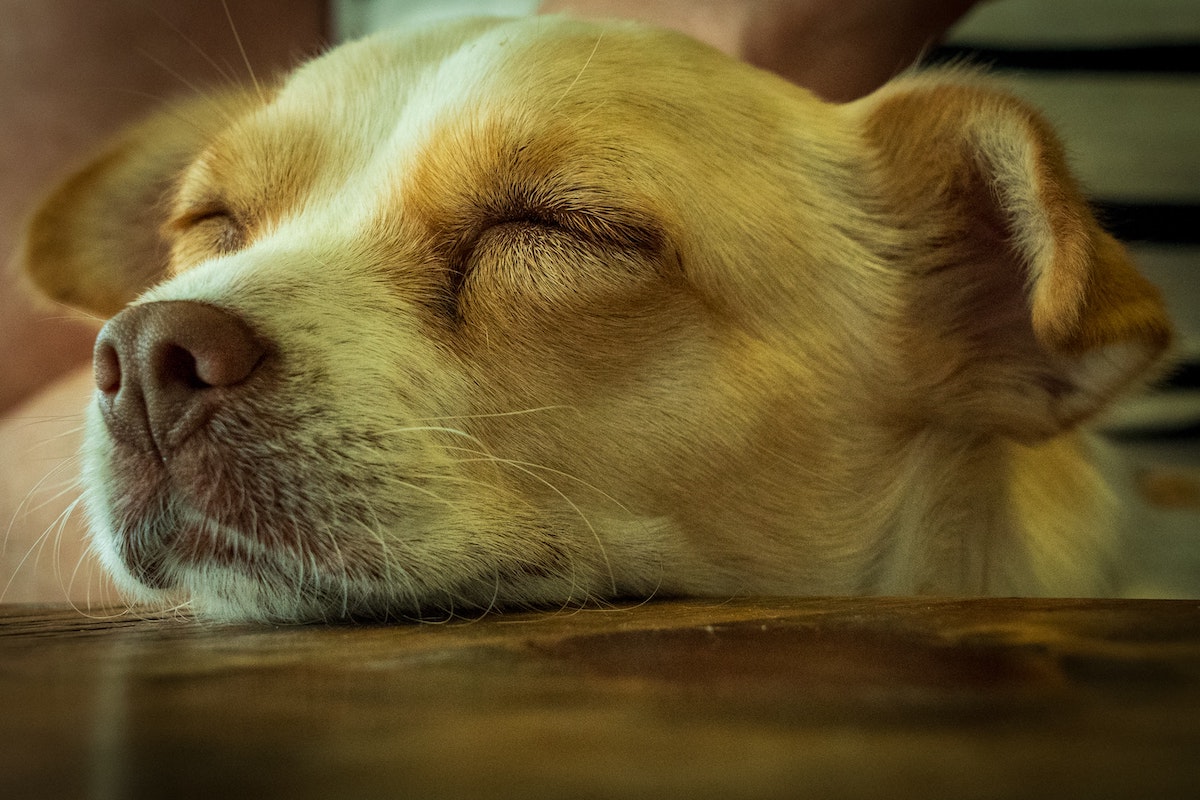Dogs need to engage in dog-like activities! Species-typical behavior refers to the behavior that is typical for dogs as a species, which differs from, for example, the behavior of horses. This includes activities such as sniffing, chewing on food, and digging. Dogs require species-typical activities to stay happy and balanced. Without appropriate activities, dogs may become passive, behave overly actively, or develop various behavioral problems.
In addition to the common needs shared by all dog breeds, different breed types have tendencies towards certain behaviors depending on the tasks they were originally used for and the type of environment the breed comes from. These factors continue to affect dogs' behavior today, even if they live in a very different world than their ancestors did.

How do behavioral needs relate to being alone? For some dogs, separation anxiety issues can be solved or at least alleviated by providing them with daily opportunities for dog-like activities. For example, daily feeding routines can greatly affect a dog's state of mind and demeanor, as well as its ability to relax.
Instead of a quick mealtime visit to the food bowl, it's better to offer food in ways that provide your dog with enjoyable activities for a longer period of time. A food bowl is not needed in a dog's feeding routine.
Substitutes for the food bowl
- Scattering food on the lawn or in bushes for your dog to find. It's easier for your dog to find the food on the lawn, which may be a suitable difficulty level for a beginner. You can spread the food over as large an area as you feel is appropriate, but start by dividing the food into a square area of about one meter.
- KONG toys. These toys are available at pet stores and many department stores. You can put wet food or other pasty substances inside the KONG toy, and increase the difficulty level by freezing the toy before serving. Note that you can also soak the kibble in water first in the fridge and make a soft porridge to fill the toy!
- You can also hide food in a towel. Wrap the food in different parts of the towel and make an enticing bundle out of it. Do not use a towel if you suspect that your dog may swallow pieces of the towel.
- Cardboard-made puzzles are many dogs' favorite! You can fold the ends of a toilet paper roll and put food inside it. Milk cartons are also great containers. Increase the difficulty level by folding cardboard rolls inside milk cartons. Usually, dogs shred cardboard products. You can save all the cardboard shreds your dog makes and eventually move them into a larger cardboard box or container. Finding food among the cardboard is a good activity for your dog.
Naturally, a dog's diet must also support its wellbeing. It's worth checking from time to time whether the food's energy content is appropriate for the dog's needs. And is the food suitable for the dog so that it won't be restless during alone time due to stomach problems? You can inquire about this from a veterinarian, a canine nutritionist, or another professional who is knowledgeable about feeding dogs.
Do you know your dog's hunting style?
Each dog's behavior repertoire includes a set of movement patterns that progress in a certain order as part of the hunting behavior. These include, for example, searching, staring, stalking, chasing, gripping bite, killing bite, dismemberment, and eating. The breed background affects which parts of the hunting chain the dog carries out and how.
Knowing your own dog's hunting style is not only related to hunting use but has versatile benefits in everyday life. The information helps you better understand your dog's behavior in different situations and plan suitable prey games for it. Therefore, it's worth getting to know your own dog breed's history and purpose through breed guides and breed associations, even if the dog is just a companion dog. You can use this information, for example, in choosing hobbies, delivering rewards, playing with your dog, and feeding it. If your dog enjoys, for example, chasing, tearing, or dismembering, offer these activities to your dog in an allowed form (e.g. chasing a thrown treat, playing tug-of-war with a toy, or shredding a milk carton filled with food).

Varied outdoor activities for your dog
The quality of your dog's exercise also affects their ability to cope with being alone. Just like with humans, exercise has numerous positive physical and psychological effects on dogs. Short potty breaks are not enough for an active dog and can make them even more restless when indoors. It's important not only to consider the length and regularity of your walks but also their content. However, it's not recommended to suddenly increase the amount of exercise, but rather to gradually do it in small increments. This will prevent sudden muscle strain and resulting stiffness. You can make your walks more interesting by having your dog balance on rocks or logs, or by offering them food-related tasks to do outside. Many dogs also love playing tug of war with their toys outside.
Your dog's natural way of moving affects their pace of movement, their walking on a leash, and their ability to move freely. Depending on your dog's build and temperament, they may have a particular preference for certain types of movement, such as trotting, galloping, power movements, or a combination of these. It's worth understanding your dog's preferred way of moving to ensure that they're moving in a way that is natural for them.
The amount and quality of exercise your dog needs depends on their breed, age, size, current life events, and the owner's resources. If you're unsure about the right exercise routines and amounts for your dog, you can always ask your veterinarian, animal physiotherapist, or trainer.
It's not just the quality of the exercise that matters, but also how much time your dog spends outdoors. It's not always necessary to move quickly and cover long distances; sometimes it's better to let your dog relax and smell the world around them while on a long leash. If your dog is constantly moving quickly during walks, they may miss out on important natural behaviors, such as digging and smelling. The forest is an excellent place for dogs to dig holes and look for roots, which is a very stimulating and enjoyable activity for them.
Spending hours in your yard and keeping an eye on passers-by is not sufficient exercise for your dog. In fact, it can keep your dog's arousal levels high, preventing them from calming down and relaxing, which can affect their ability to cope with being alone. The same applies to playing fetch for long periods of time, which, despite its good intentions, can also prevent your dog from calming down. Be mindful of how much of your dog's favorite, but stimulating, activity is available.
The environment in which you walk your dog is also important. If your dog experiences stress related to being alone, it's best to walk them in calm areas with fewer stimuli. If your dog seems bored, offer them new adventures in new environments. Forested areas are often a good choice for both purposes. In the forest, your dog uses their body more fully, and the soft ground is good for their joints. For most dogs, walking on a flat pavement is not enough exercise.

Spending Quality Time with Your Dog
Dogs are social animals, and to be happy and healthy, they require interaction with both humans and other dogs. Their social needs cannot be met if they spend excessive amounts of time alone, such as overnight and throughout the workday.
As part of alone training, it is crucial to ensure that you allocate enough time each day for bonding with your dog. In addition to participating in activities together, you can also spend time relaxing with your dog in the evenings on the couch by sleeping in the same room. Dogs crave affection, and it is natural for them to want to be close to one another or their human companions. However, individual preferences may vary, and some dogs may not want to sleep in close proximity to others.
It is also beneficial to teach your dog how to rest separately from humans while you are at home, but this skill should be developed independently. To create some distance between you and your dog indoors, you can use a dog gate. Keep in mind that not all dogs inherently know how to calm down or be alone without specific practice. If a dog experiences excessive alone time and insufficient social contact, separation anxiety problems can easily develop.

Food for thought
When addressing separation anxiety, it's essential to consider whether your dog has regular opportunities to engage in activities that are enjoyable and typical for its species. Are they getting enough exercise, rest, and social interaction with humans, dogs, or other animals? By providing mental and physical stimulation, dogs should develop a need for rest. Through social contact, they should also develop a need for solitude. If a dog's basic needs are constantly left unfulfilled, problems can arise during separation.
However, it's important to remember that every dog is an individual. Hopefully, this article will help you observe your dog's individual tendencies. This way, you can ensure that your dog has approved opportunities to get excited and expend energy through play, exercise, training, and enrichment. Some dogs may also benefit from participating in various hobbies. However, it's always essential to provide sufficient rest and relaxing moments as a counterbalance.
For more information on the significance of species-typical needs and tips on how to meet them, you can read our extensive guide on dealing with separation anxiety.
Last updated May 2, 2023
 Train your dog to stay home alone. With love
Train your dog to stay home alone. With love  Deutsch
Deutsch English
English Español
Español Français
Français Italiano
Italiano 日本語
日本語 Português
Português Suomi
Suomi Svenska
Svenska

